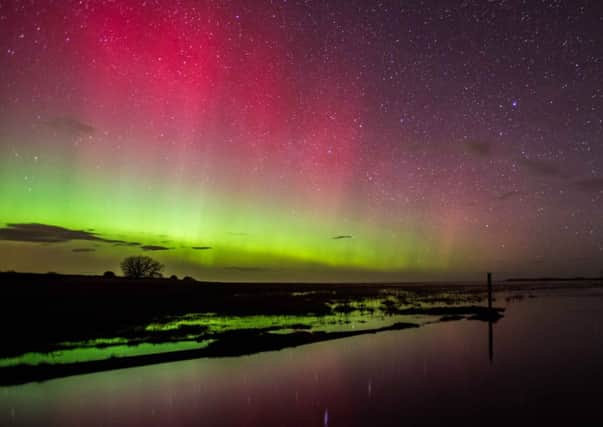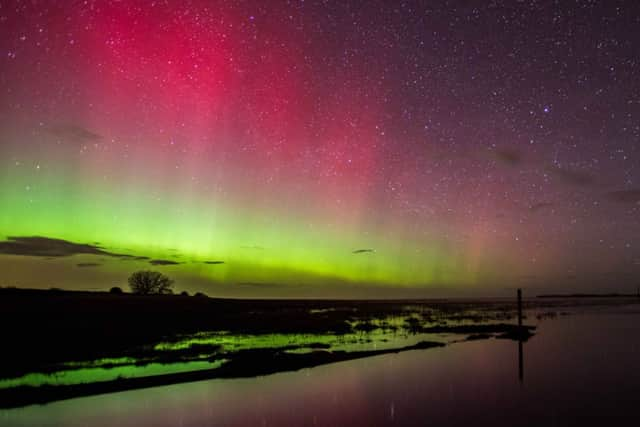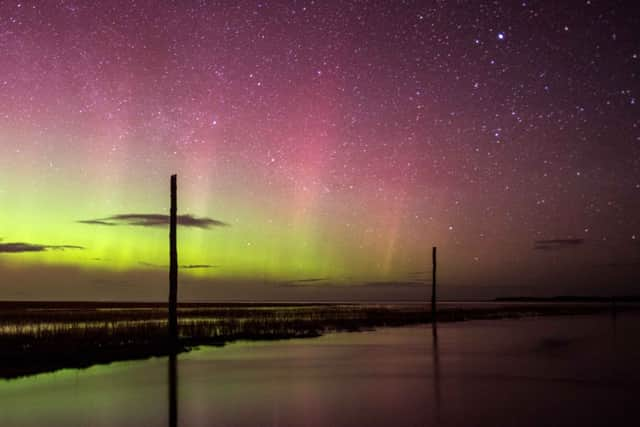Video: Northern Lights light up Christmas Eve sky


The spectacle was seen in the early hours of Christmas Eve, as colours of green and pink appeared in the sky.
CONNECT WITH THE SCOTSMAN
• Subscribe to our daily newsletter (requires registration) and get the latest news, sport and business headlines delivered to your inbox every morning


Advertisement
Hide AdAdvertisement
Hide AdKnown as the Aurora Borealis, the natural wonder is caused by charged particles colliding in the Earth’s atmosphere and is seen above the magnetic poles of the northern and southern hemisphere.
Photographers Owen Humphreys and Tom White braved the cold to capture the display, that could be seen near Bamburgh Castle, in Northumberland.
Before a display, electrons and protons are hurled from the sun’s atmosphere and are blown towards the Earth by the solar wind.


Often these particles are then deflected by the Earth’s magnetic field but as it is weaker at either pole, some particles enter the atmosphere and collide with gas particles.
Usually the best spots to see the lights are those places close to the North Pole, such as Iceland and Norway.
In the southern hemisphere, they are known as the Aurora Australis and can often be mirror-like images that occur at the same time as in the north.
SCOTSMAN TABLET AND IPHONE APPS